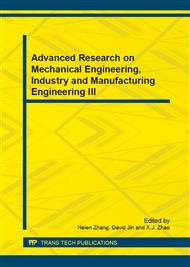p.547
p.553
p.557
p.561
p.566
p.572
p.576
p.581
p.586
Experimental Investigation on a Heat Recovery Device Installed on Cement Rotary Kiln
Abstract:
Cement production is a highly-energy-intensive industry. 85% of total energy is used in clinker-making process at rotary kiln, in which about 15% of this part of energy is dissipated via surface of the kiln by radiation and convection. In this paper, a new heat recovery device for rotary kiln is provided, and a preliminary test has been done. After analysis the result, it is found that when temperature of water in the system is low (30°C), the heat transfer can be as much as 200kW; when the temperature is high (>70°C), heat transfer decreases to about 70kW without any convective heat transfer.
Info:
Periodical:
Pages:
572-575
Citation:
Online since:
August 2013
Authors:
Price:
Сopyright:
© 2013 Trans Tech Publications Ltd. All Rights Reserved
Share:
Citation:


